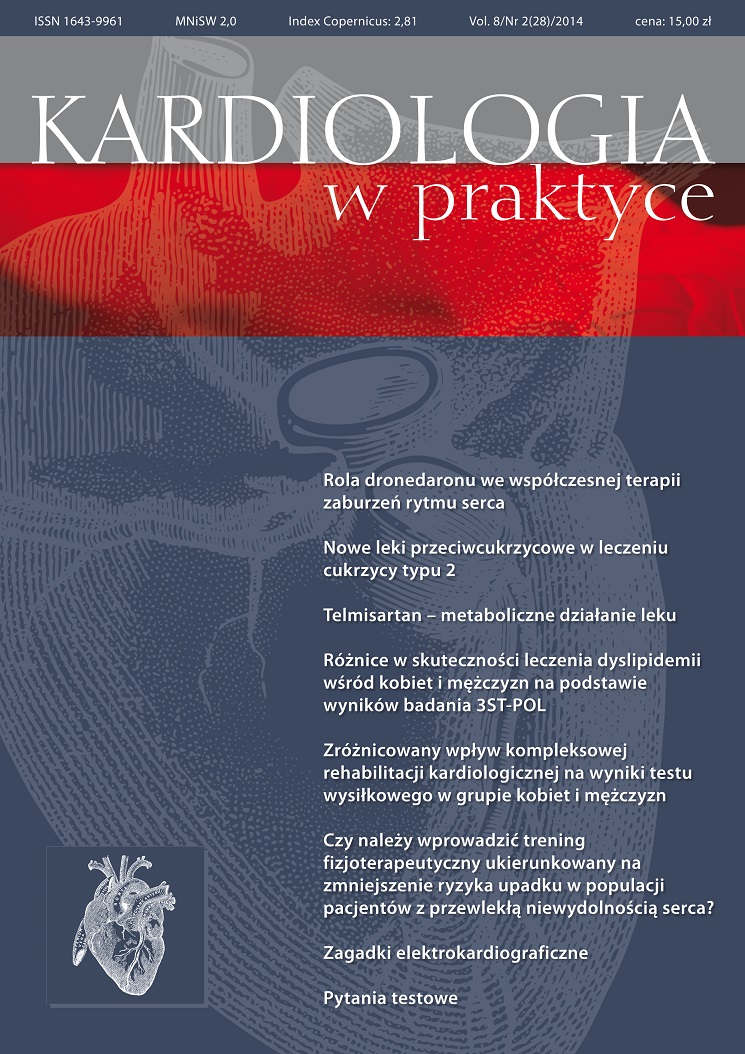Is there a need to bring a physiotherapy training aimed on reducing the risk of falls in a population of patients with chronic heart failure? Review article
Main Article Content
Abstract
The fall in the elderly can cause very serious consequences such as fractures, cranial – cerebral injuries, etc. A significant increase in life expectancy over the past few decades, has affected the need to increase efforts to reduce the risk of falling to a minimum, since ceased to be an issue of marginal sections of society. Until now, patients with chronic cardiac insufficiency circulatory derivative, were only part of the groups subjected to the above reduction in the risk of falling. It should create an exercise program for that particular group based on the latest methods of treatment and diagnosis for significant improvement in their quality of life.
Downloads
Article Details

This work is licensed under a Creative Commons Attribution-NonCommercial-NoDerivatives 4.0 International License.
Copyright: © Medical Education sp. z o.o. This is an Open Access article distributed under the terms of the Attribution-NonCommercial 4.0 International (CC BY-NC 4.0). License (https://creativecommons.org/licenses/by-nc/4.0/), allowing third parties to copy and redistribute the material in any medium or format and to remix, transform, and build upon the material, provided the original work is properly cited and states its license.
Address reprint requests to: Medical Education, Marcin Kuźma (marcin.kuzma@mededu.pl)
References
2. Żak M.: Rehabilitacja w procesie leczenia osób starszych. Geront. Pol. 2008; (I): 12-18.
3. Błaszczyk J.W., Czerwosz L.: Stabilność posturalna w procesie starzenia. Geront. Pol. 2005; 13(1): 25-36.
4. Gillespie L.D., Robertson M.C. et al.: Interventions for preventing falls in older people living in the community 2009. Cochrane Database Systematic Reviews 2 (CD007146).
5. Sethi D., Racioppi F., Baumgarten I., Vida P.: Injuries and violence in Europe. Why they matter and what can be done. WHO Regional Office for Europe. Copenhagen 2006.
6. Online: http://www.euro.who.int/__data/assets/pdf_file/0005/98762/E88037.pdf.
7. Gorzkowska A., Opala G.: Rehabilitacja w wieku podeszłym. Post. N. Med. 2010; 6: 492.
8. Podsiadlo D., Richardson S.: The Timed “Up & Go”: A test of basic functional mobility for frail elderly persons. J. Am. Geriatr. Soc. 1991; 39: 142-148.
9. Tinetti M.E., Williams T.E., Mayewski R.: Fall risk index for elderly patients based on number of chronic disabilities. Am. J. Med. 1986; 80(3): 429-434.
10. Duncan P.W., Weiner D.K., Chandler J., Studensky J.: Functional reach: a new clinical measure of balance. J. Geront. 1990; 45(6): 192-197.
11. Mackenzie L., Clemson L.: Can chronic disease management plans including occupational therapy and physiotherapy services contribute to reducing falls risk in older people? Australian family physician 2014; 43(4): 211.
12. Campbell A.J., Robertson M.C., Gardner M.M. et al.: Falls prevention over 2 years: a randomized controlled trial in women 80 years and older. Age and ageing 1999; 28(6): 513-518.
13. Nitz J.C., Low Choy N.: The efficacy of a specific balance-strategy training program for preventing falls among older people: a pilot randomized controlled trial. Age and Ageing 2004; 33: 52-58.
14. Wong K.A.M., Lin Y.C., Chou S.W.: Coordination exercise and postural stability in elderly people: effect of Tai Chi Chuan. Archives of physicalmedicine and rehabilitation 2001; 82(5): 608-612.
15. Twardowska-Rajewska J.: Krótki program usprawniania seniorów w celu minimalizowania zaburzeń równowagi. Geront. Pol. 2006; 14(1): 41-45.
16. Szpringer M., Wybraniec-Lewicka B., Czerwiak G. et al.: Upadki i urazy wieku geriatrycznego. Stud. Med. 2008; 9: 77-81.
17. Hauer K., Rost B., Rutschle K. et al.: Exercise training for rehabilitation and secondary prevention of falls in geriatric patients with a history of injurious falls. J. Am. Geriatr. Soc. 2001; 49(1): 10-20.

